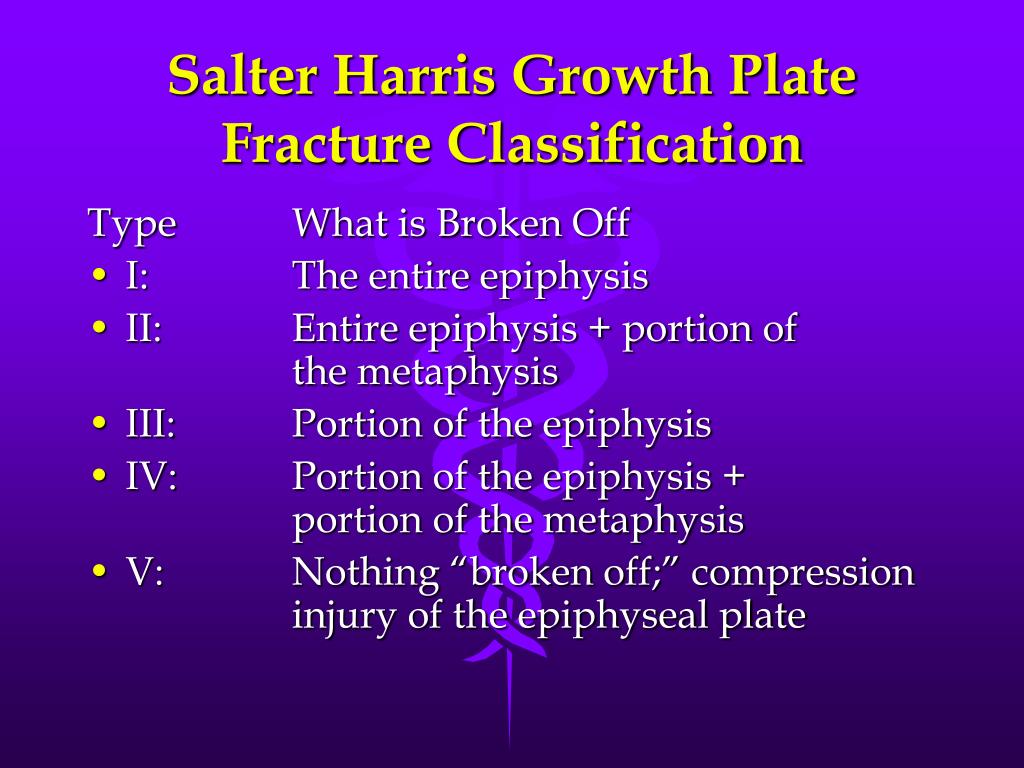
Classification, diagnosis, and treatment of transitional. We present the case of a 16-year-old male who sustained a Salter-Harris III transitional fracture of the distal radius with an associated ulnar styloid avulsion fracture secondary to a fall that was treated nonoperatively. CTĬomplex metaphyseal or epiphyseal fractures can be further assessed at CT. None have involved a Salter-Harris III fracture pattern. Type 3 fractures in turn, involve the physis and the epiphysis. Type 2 fractures, the most common type, traverse the physis and the metaphysis. Type 1 is through the growth plate, separating the metaphysis and epiphysis.

Salter-Harris type I fractures describe a fracture that is completely contained within the physis. Not all fractures that extend to the growth plate are Salter-Harris fractures.

If the fracture is completely within the physis, there is no bony abnormality and there may just be widening or narrowing of the physis which can be challenging to diagnose at the initial presentation. Note that this classification system is only for injuries involving the growth plate. Salter-Harris fractures are injuries where a fracture of the metaphysis or epiphysis extends through the physis. X-rays are usually all that is required to make the diagnosis. When the fracture passes towards the epiphysis, it passes through the zones of proliferation and reserve which result in possible premature closure of the growth plate at the fracture site. Fortunately, this is not a region of active growth, and therefore fractures through this area have a good prognosis. Fractures tend to propagate along the weakest zone, which is the spongiosum. Perhaps the most widely used by doctors is the Salter-Harris system, described below. The growth plate has five distinctive zones. Classification of Growth Plate Fractures Several classification systems have been developed that categorize the different types of growth plate fractures. Treatment may be nonoperative or operative depending on the Salter-Harris classification, stability, and displacement of fracture. Diagnosis can be confirmed with plain radiographs of the knee. Physeal fractures are most common in 10-to-16-year-old children, except for elbow fractures, which are more common in 3-to-6-year-old children 2. They most commonly occur following trauma, although at the hip, a slipped upper femoral epiphysis (SUFE) is a type I fracture that can occur without an acute traumatic event. Proximal Tibia Epiphyseal Fractures are rare injuries seen in adolescents that may be associated with vascular injury. Physeal fractures represent ~35% of all skeletal injuries in children 2. Physeal fractures are also commonly called Salter-Harris fractures because the dominant and ubiquitous classification for these injuries is the Salter-Harris classification.


 0 kommentar(er)
0 kommentar(er)
